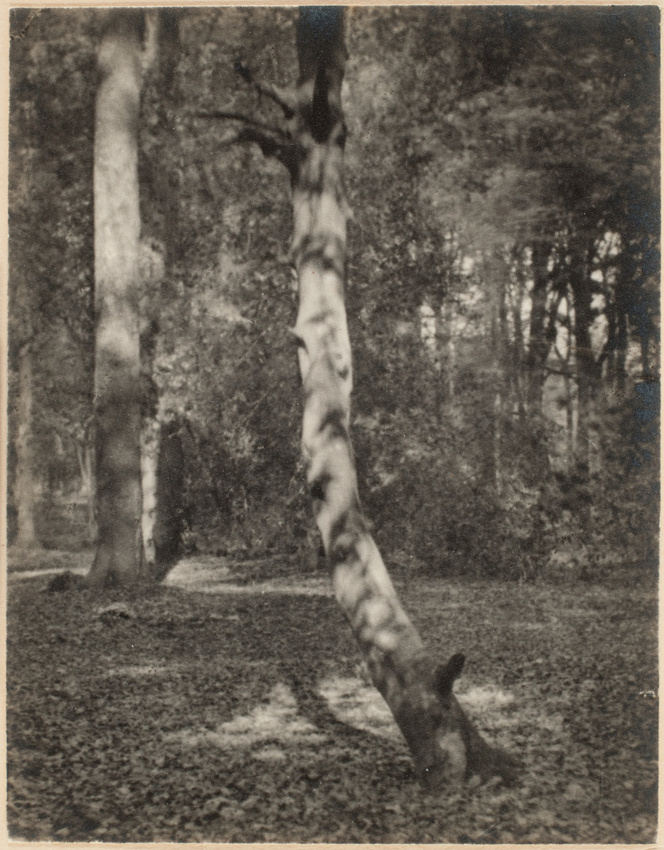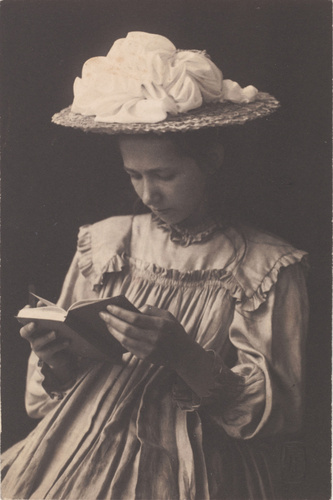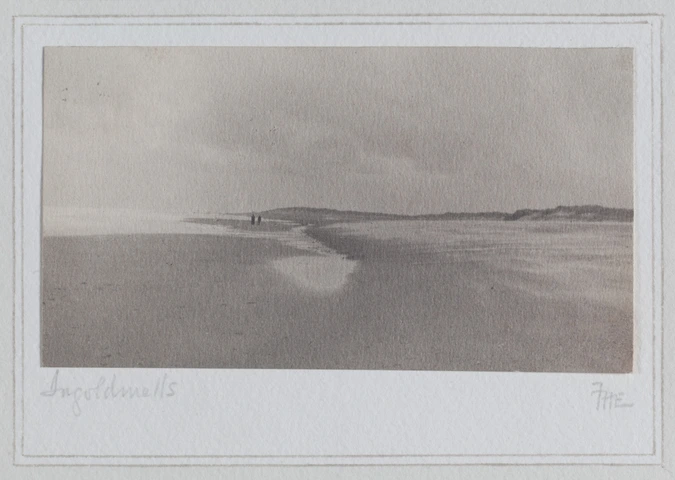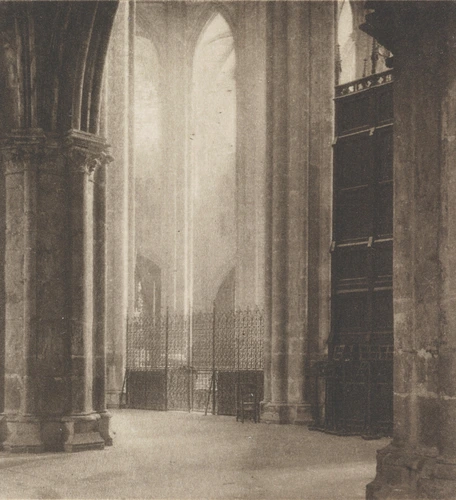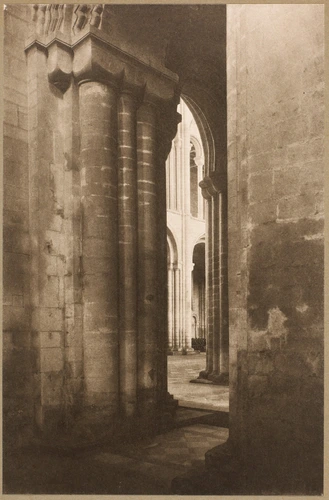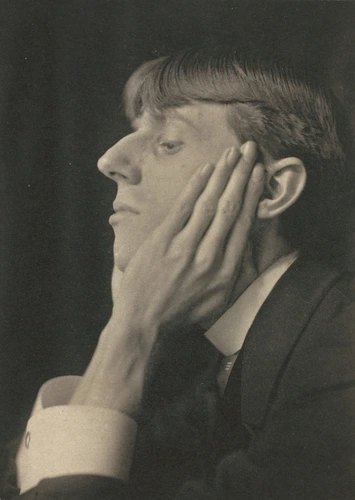In Deer Leap Woods : Surrey
The photographer who took this image, both in choice of subject and technique, follows in the tradition of the "primitive" photographers working around 1850. However, the Symbolist atmosphere emanating from the undergrowth here reminds us that the image dates from 1909 and is the work of a British Pictorialist, Frederick Evans. It is part of a series taken in a forest in Surrey known as the "Deer Leap Woods" one of the favourite walks of the poet George Meredith (1828-1909). This work was to have illustrated the frontispiece of the posthumous complete edition of the author's writing.
Evans had taken up photography as an amateur in the early 1880s, when he was still a bookseller in London. From his early reproductions of shells through a microscope, he retained a preference for a precise and unmanipulated image, and maintained this approach even when devoting himself completely to photography after 1903. This distinguished him from the majority of the Pictorialists who at that time were using soft focus.
Through his remarkable sense of composition and light, Evans brought a lyrical dimension to his images, as we can see in this view. The advice he gave to amateur photographers was to look for the image inside themselves, to try and capture an emotion rather than a structure.
After 1914, the great Pictorialists like Alfred Stieglitz and Edward Steichen, and younger photographers like Paul Strand and Edward Weston, would also return to the precise image: they would refer to "Straight photography", to such an extent that, looking back, Evans now, appears to be one of the most modern of the Pictorialists.
